
This park was the connection between the city outside the walls and the city inside the walls. The old Wall of Havana ran through here until the early 19th century when it was demolished to allow for the city's expansion.
What is now called Central Park was once a barren piece of land; today, it is one of the most beautiful, visited, and photographed parks in the city.
For me, the most beautiful part of the park is not in the park itself, but in what surrounds it.
In less than 200 square meters, you can find the highest concentration of architectural beauty in the city.
In today’s post, I want to show you a series of buildings that will leave you eager to visit them.
Join me to discover the beauties surrounding Central Park of Havana.
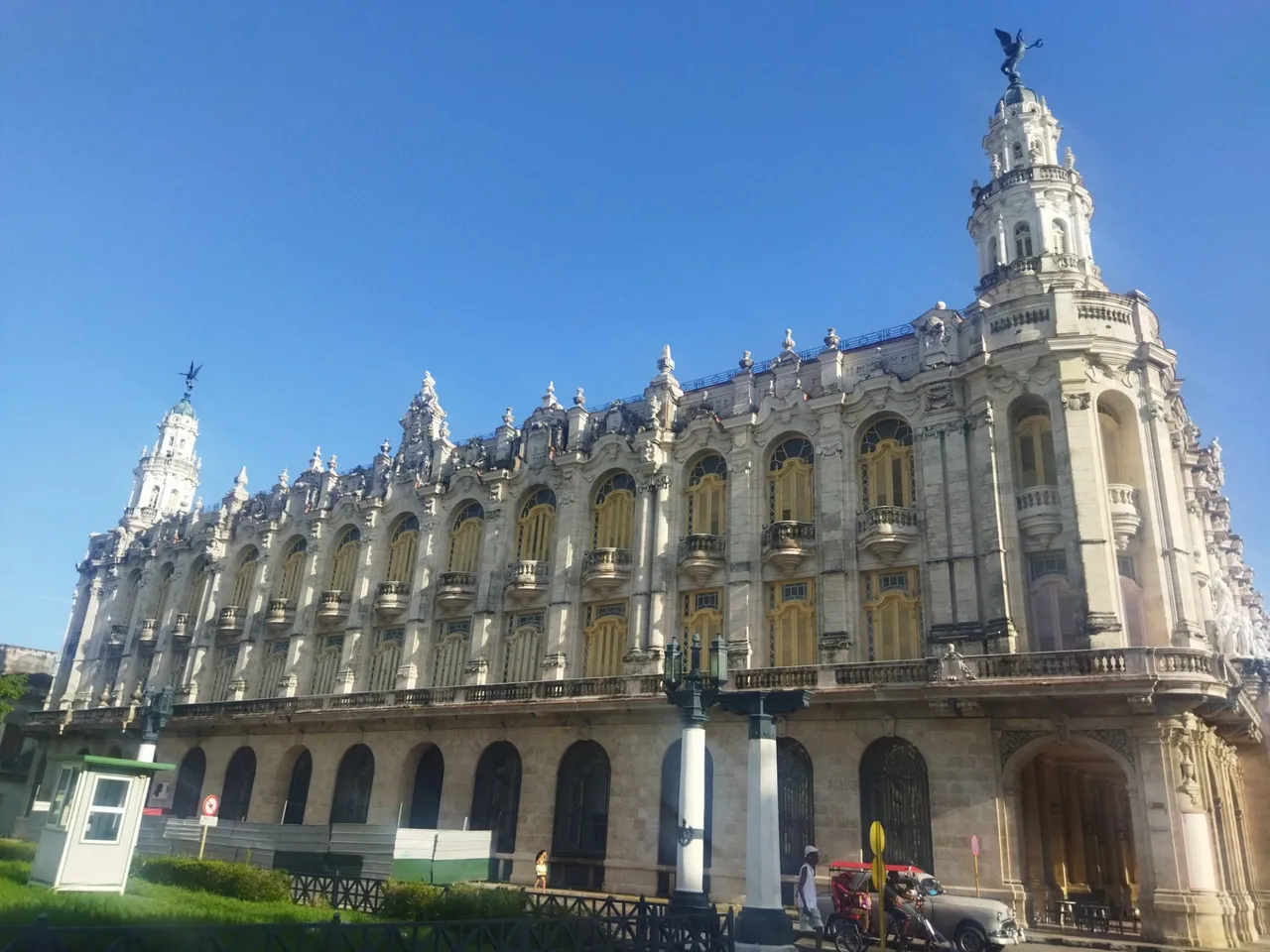
Great Theatre of Havana "Alicia Alonso"
National Ballet of Cuba House. It was renamed in honor of the greatest dancer of our country. It is little known, but it is also the headquarters of the Galician Association in Cuba.
I have been visiting this place since I was a child, and it is one of my favorites in the city. My family belongs to the association, and we participate in various activities held throughout the year.
The level of detail on the façade is incredible. According to what I learned at the association, the façade has a neobaroque style and features representations that allude to Charity, Education, Music, and Theatre.
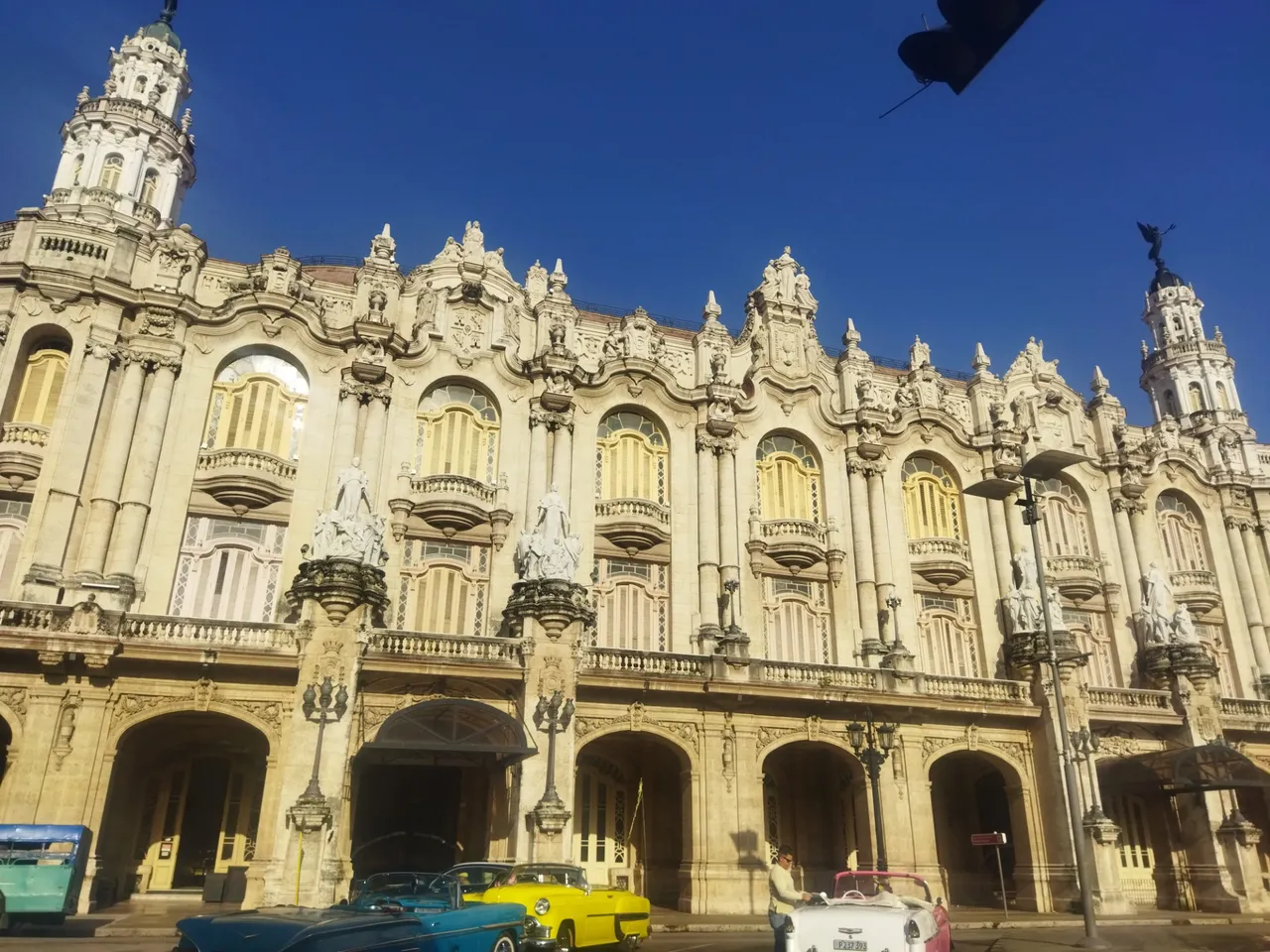
It is impossible not to spend hours searching for details in this theatre/center.
From any angle, it is a beautiful building. Inside, it is even more stunning, with gigantic windows and details in every corner.
If you come to Cuba and Havana, when you visit the Capitol, it is right next door.
Let’s continue the tour...
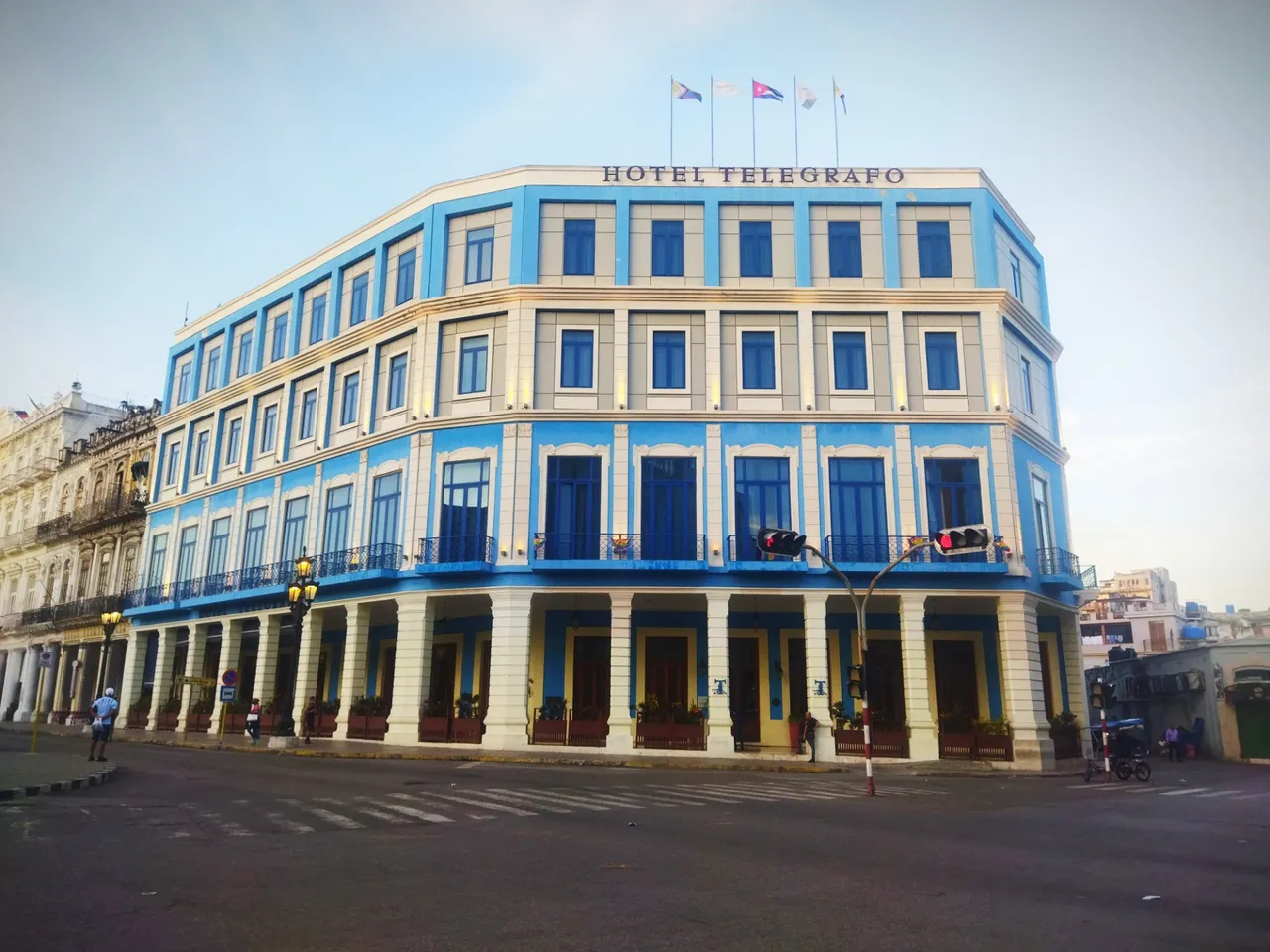
Hotel Telégrafo
(On the same street as the previous building, separated by the Boulevard of San Rafael and a few houses )
When it was built, it was the first hotel in Cuba (in the mid-19th century).
It was built with such luxury that my grandparents told me it was the meeting place for the city's elite.
Everyone saved up to afford a dinner there and experience luxury firsthand. My great-grandparents had their wedding dinner here, and they say they had to save for almost five years to afford it.
The building was demolished in the mid-20th century due to the deterioration of the original structure. Its importance was such that it was rebuilt, emulating the original but improving it for the times.
Today, this hotel is known for being the first to promote gay tourism in Havana. Additionally, it has one of the best rooftop bars in the city (this is a recurring theme in this post).
It is a shame that in this same block we see the contrast and reality of Cuba. The Great Theatre and the Telégrafo are well cared for and maintained, while the private houses already show the passage of time. That is the true Cuba.
Back to the tour. We cross the street and will find a peculiar facade.
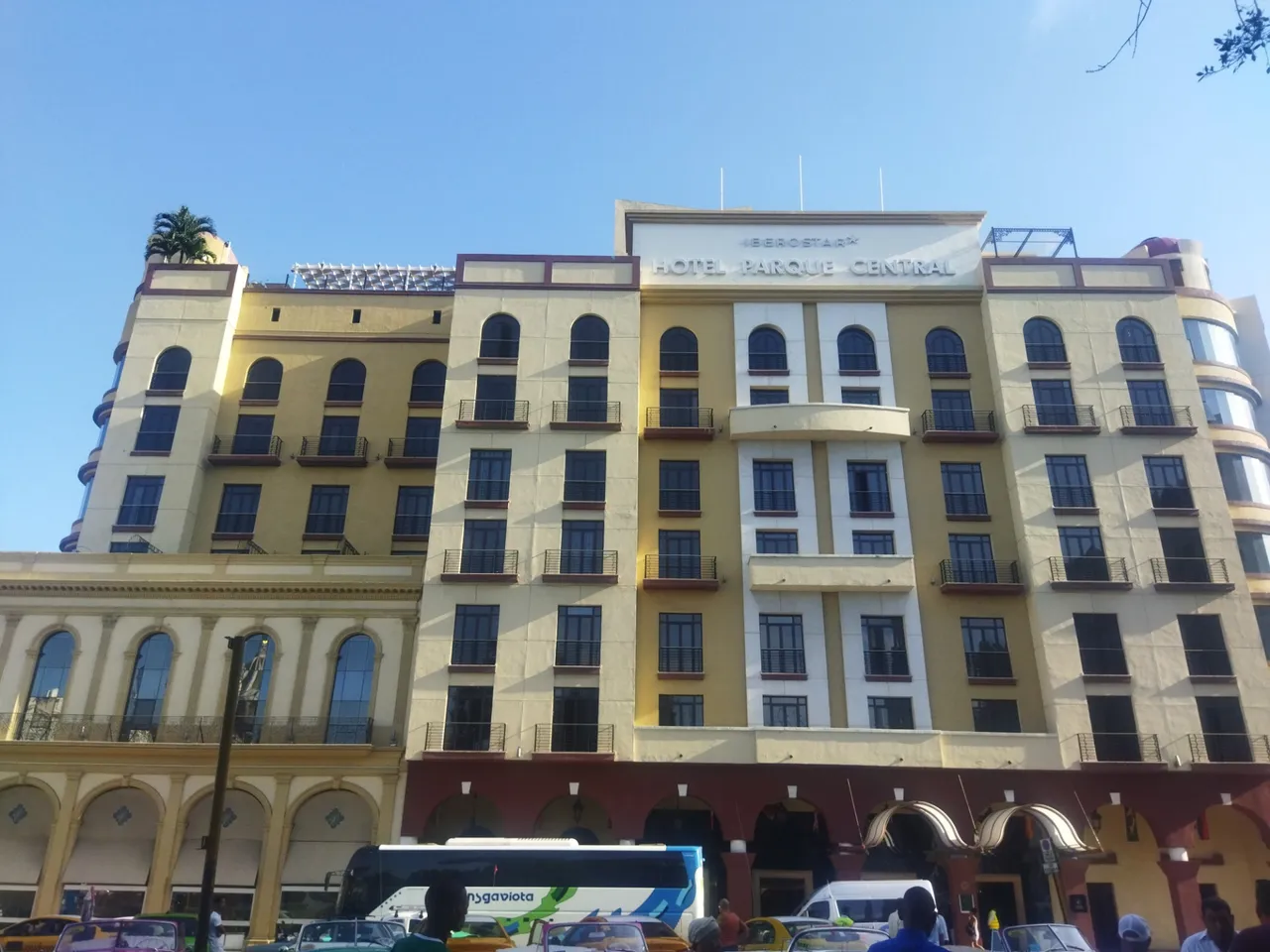
Hotel Parque Central
Inaugurated in 1998, it was one of the Cuban government's major bets to boost tourism—and they certainly succeeded!
It has been the most coveted hotel by tourists in recent years (ranked among the best breakfasts in the world); it is operated by Iberostar, the crown jewel until the company expanded throughout Cuba.
The "Yellow Giant" has a marked Spanish colonial style. The façade was preserved from its predecessor to maintain harmony and integration with the surrounding environment. The entire building honors Spanish culture and its architecture and refined taste.
What I love most about this hotel is its location. Imagine waking up to the view of Central Park with the Great Theatre and the Capitol of Havana in the background—simply beautiful.
The hotel rivals the previous one and has a rooftop pool with views of the Caribbean Sea and El Morro, as well as the Paseo del Prado and everything mentioned earlier.
Until recently, it had one of the best pools in the city. Today, it has been surpassed by the next hotel on the list.
What’s interesting about the Iberostar "Parque Central" is that it is divided into two blocks. The other section features more modern architecture and is connected by a unique underground tunnel in the country.
We cross the street again, excluding the Sevilla hotel, which is another gem for future posts.

Hotel Gran Manzana
When it comes to luxury, the Kempinski "Gran Manzana" hotel is the crown jewel of Cuban hospitality.
The company that designed and executed La Lonja del Comercio (I recommend that post) is the same one that built Gran Manzana.
Another building created for commerce in the city. Many consider it the first European-style shopping center. Originally, it housed trading companies, offices, shops, and banks (Cubans referred to it as: La Manzana de Gómez). It also hosted major law firms and renowned newspapers.
My grandmother was brought here to see the grand windows and ride the elevators when they were installed, as it was quite a novelty.
The hotel chain has revived this place and remodeled every corner to make it as faithful to the original as possible. The luxury inside the hotel is incredible, hence its high price and the category it has been awarded.
The bar (which is somewhat more affordable) and the pool located on the rooftop offer the best views of Havana. It’s a true pleasure to watch the sunsets from this place, and I personally highly recommend it.
The Gran Manzana Kempinski Hotel is classified as the first 5-plus hotel in Cuba.
Continuing with the tour, right across the street, we have another marvel of Havana's architecture.
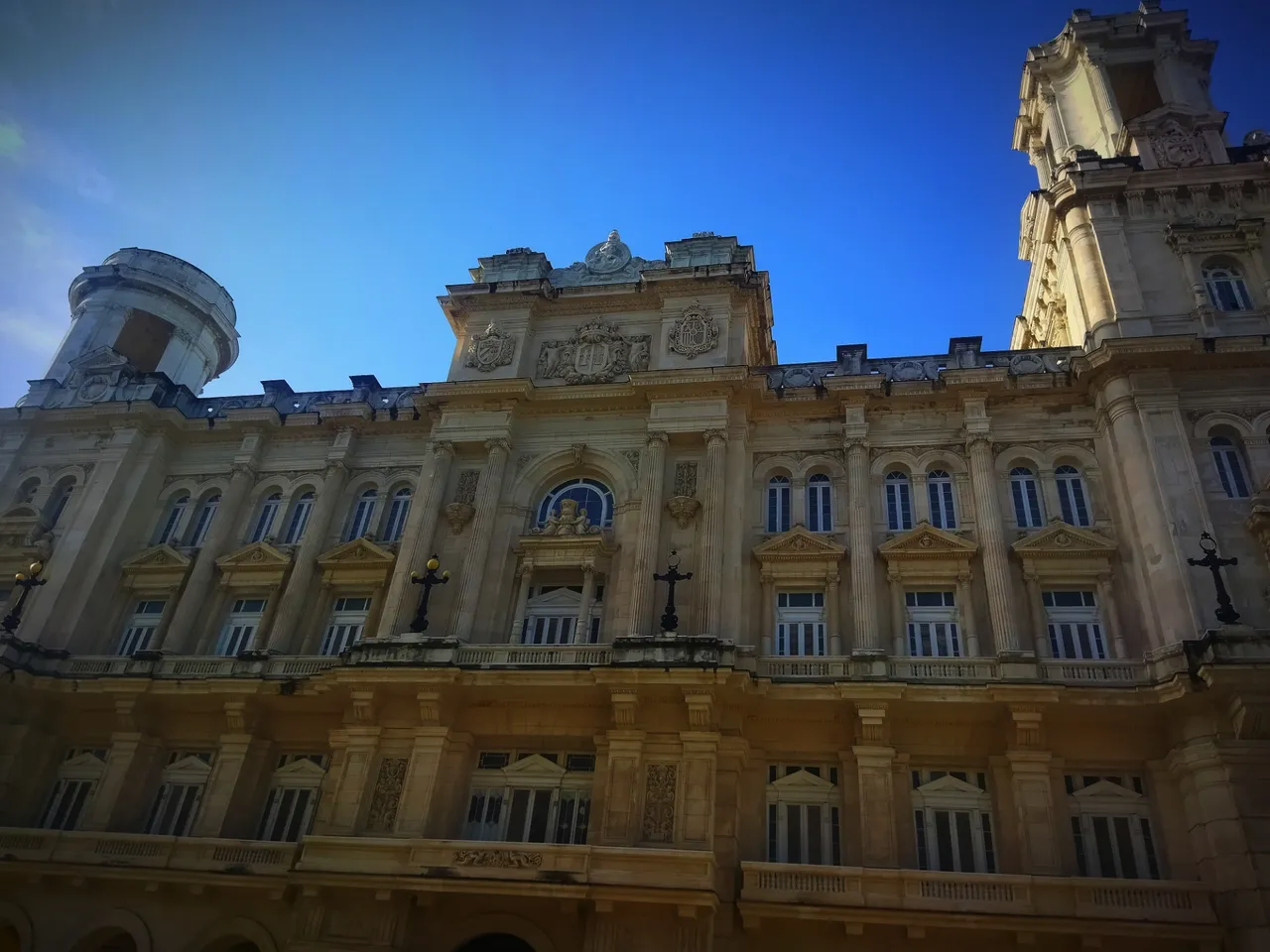
Museum of Universal Art
In the past, this marvel was the center of the Asturian Community in Cuba. It was one of the most supportive associations for the Asturian community outside Spain.
Today, this beautiful place is part of the Museum of Fine Arts and houses a large number of Cuban artworks. The café is another beauty of design.
From the outside, the colonial style and symmetry of its windows invite you to detail each floor. Its porticos are crowned by antique lamps, which, although they do not serve their function, are a beautiful decorative element.
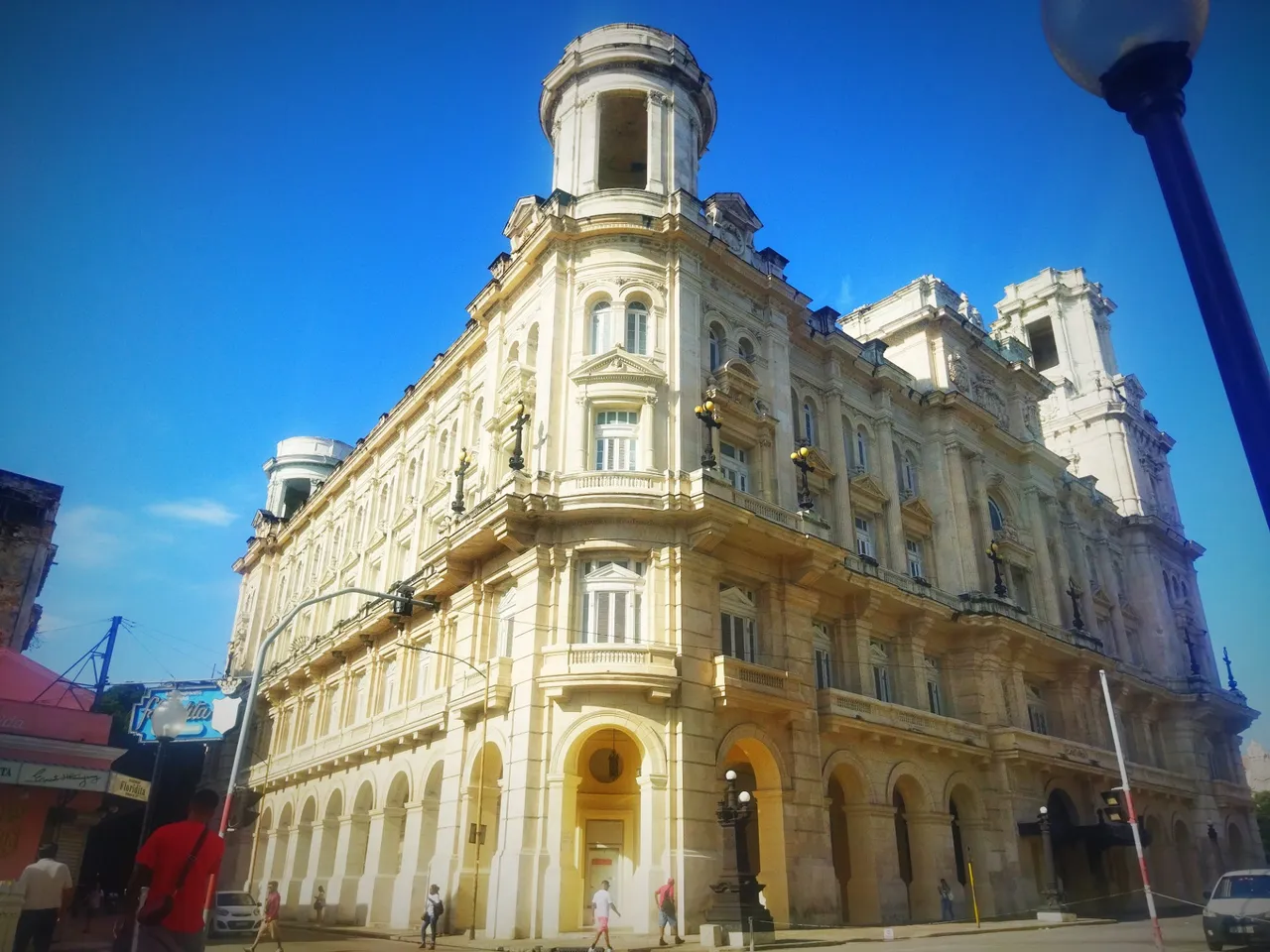
Despite the noticeable deterioration, the old Asturian center is a beauty inside and out.
On the fourth corner would be the Payret Theatre. At the time of this post (August 2024), the theatre has been demolished as part of government works to remodel it and adapt it to be the future theatre of the National Assembly.
Accepted decision? I don’t think so.
Let’s hope that in the not-so-distant future, this project will close the cycle of architectural marvels surrounding Central Park of Havana.
Many of these are hotels, but each one has its own particular story. In their own way, they take us back to our Spanish roots and show how they were the nerve center of what we now know as Havana.
The evolution of this area is a clear example that modernity and the classical can coexist and even blend, but the history of places must always be respected, and above all, we must take care of these heritages left to us by our ancestors.
Which of these buildings did you like the most?
Let me know in the comments if you would like me to show you any particular one or comment on anything that comes to your mind. I’d be happy to read you down there in the comments.
Read you soon!
[dahpilot]
All images used in this post are my own.
The information mentioned in the post was obtained from stories from my grandparents, guides at the locations, or the buildings themselves. No information from the internet was used for...